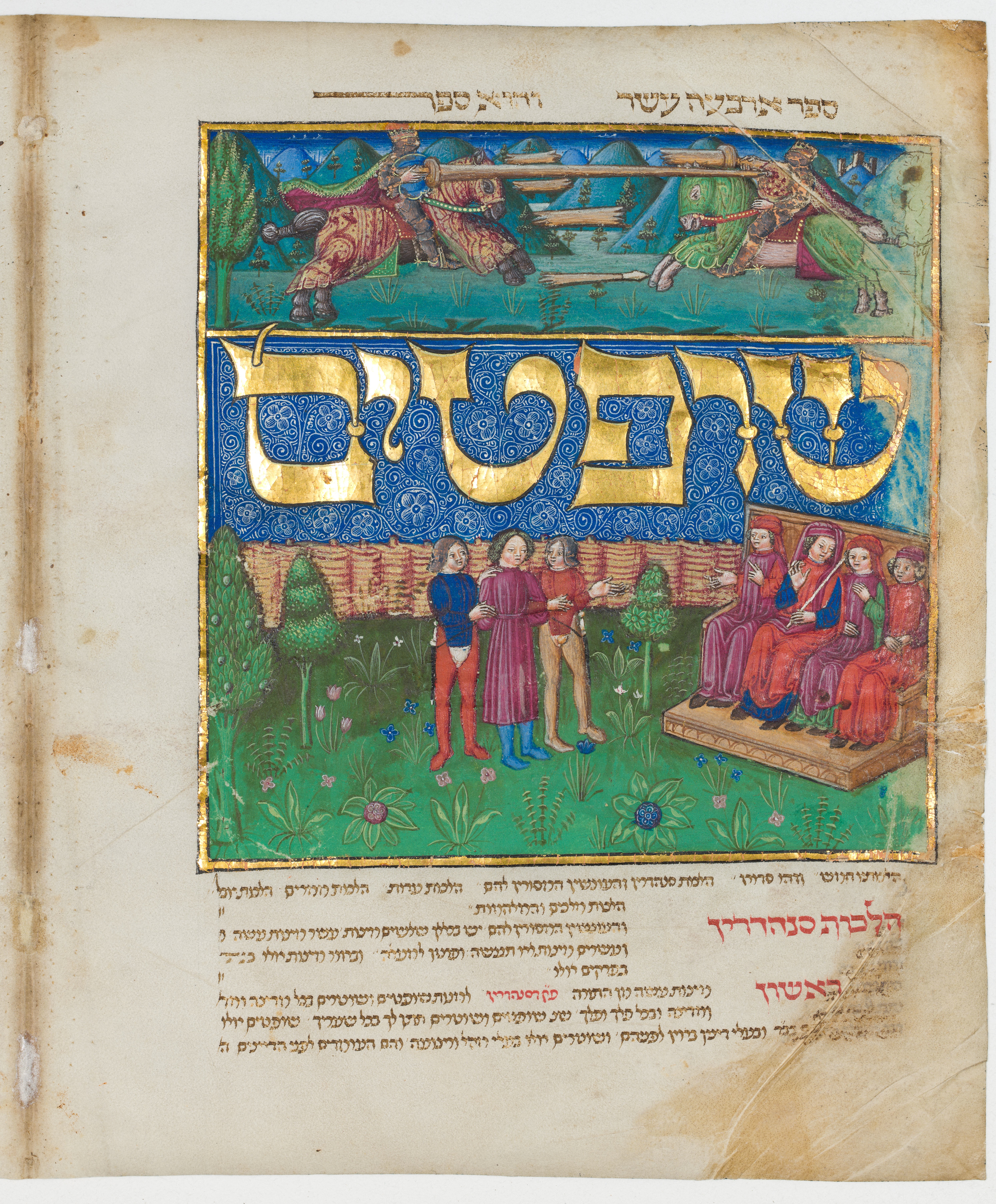By Diane M. Bolz
Maimonides Illuminated
One of the finest and most elaborate illuminated Hebrew manuscripts in existence is now on view at the Metropolitan Museum of Art in New York City. The extremely rare 15th-century handwritten and illustrated copy of medieval philosopher Maimonides’ Mishneh Torah was jointly acquired by the Met and Jerusalem’s Israel Museum in April 2013. Now displayed for the first time since that acquisition, the manuscript, previously in the collection of Judy and Michael Steinhardt of New York, will be exhibited at the two museums on a rotating basis.
Assembled between 1170 and 1180 by the esteemed rabbi, physician and scholar Mosheh (Moses) ben Maimon—known to English speakers as Maimonides (1135-1204)—the Mishneh Torah was the first systematic consolidation of Jewish law into a comprehensive anthology. The publication of this 14-volume compendium established Maimonides as the leading rabbinic thinker and authority of his time. The work organizes all the commandments of the Torah and attempts to show that every aspect of Jewish law relates to a rational purpose. Book I (Book of Knowledge) elucidates the philosophic foundations of Jewish beliefs. The final book, XIV (Book of Judges), ends with the contention that a Messiah will come, restore sovereignty to Israel, establish peace with other nations and lead the world in the study of science and philosophy. Born in 1135 in Cordoba (present-day Spain), then under Muslim rule, Maimonides was forced to leave in 1160 when the Almohads—a Moroccan Berber-Muslim dynasty—invaded. He fled first to southern Spain, then to Morocco and ultimately, in 1166, to Egypt.
The 15th-century illuminated copy on display was created in Northern Italy around 1457 and includes the eight final books (Books VII–XIV) of the Mishneh Torah. The Hebrew manuscript features six large painted panels decorated in gold leaf and precious pigments, and 41 smaller paintings with gold lettering. The inventive and colorful illustrations, the opulent use of gold and the elegant script make it one of the finest extant illuminated copies of the Mishneh Torah. The manuscript is the work of the artist known as the “Master of the Barbo Missal,” after a missal he created for Marco Barbo, the Bishop of Treviso. He also collaborated on some of the most important book commissions of his day. The Mishneh Torah manuscript is his only known work for a Jewish patron.
With no iconographic precedents to follow, the artist turned to the world around him for inspiration in creating his lively narrative scenes. His illustrations thus open a window on the contemporary costumes, buildings and customs of his time. At the Met, the manuscript is open to an illumination in Sefer Shoftim (Book of Judges)—dedicated to rules governing law courts and warfare. In this illustration, the artist depicts a defendant flanked by armed guards standing before a bench of judges in a lush outdoor court. The word Shoftim, shimmering in burnished gold, appears to be suspended in front of a blue backdrop or curtain. A favorite theme in medieval art—the world of knights and tournaments—is referenced in the horizontal depiction at the top of the page, setting the stage for the text’s discussion of rulers and war.
The manuscript will be on display through January 5, 2014, along with several other 15th-century works from Europe. A second Mishneh Torah, on loan from the Jewish Theological Seminary, is also on view. Created in tempera and ink on parchment between 1300 and 1400 in Germany and more restrained in its decoration, this version will be open to an imposing image of the Temple Menorah, which Maimonides describes in detail in Sefer Avodah (Book of Temple Service).

